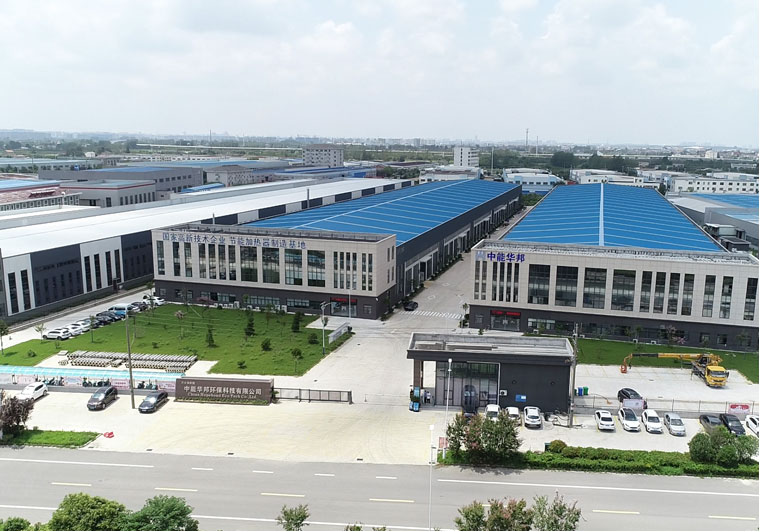Heating Equipment
The Shell-and-Tube Heat Exchanger (shell-and-tube heat exchanger) is one of the most widely used heat exchange equipment in the industrial field. It adopts a tube-shell structure design, with one side of the fluid flowing through the tube section and the other side flowing through the shell section. Heat is efficiently transferred through the tube wall. The equipment is structurally robust, resistant to high pressure and high temperature, and suitable for various complex working conditions.
This product is manufactured using high-quality carbon steel, stainless steel, or special alloy materials. The tube bundle is designed for disassembly, facilitating cleaning and maintenance, and meeting the heat exchange requirements of industries such as petrochemicals, power, refrigeration, and food processing.
details
Product features:
Efficient heat transfer
Optimized tube bundle arrangement and baffle design enhance turbulence, thereby increasing the heat transfer coefficient.
Supports various tube types (straight tubes, threaded tubes, low finned tubes), suitable for different viscosity media.
Reliable structure
Compliant with ASME, TEMA, and GB/T 151 standards, it has strong pressure-bearing capacity and excellent seismic performance.
With the floating head/U-tube design, it eliminates temperature difference stress and extends the service life of the equipment.
details
Product advantages:
Convenient Maintenance
The detachable tubes can be removed independently from the front and rear tube boxes, ensuring no cleaning blind spots.
Anti-vibration gaskets and expansion joints are provided to reduce the impact of vibration and thermal expansion.
Strong adaptability
Supports various phase changes such as gas-liquid, liquid-liquid, and gas-gas heat exchange.
Can withstand corrosive media including acids, alkalis, and salts.
Energy conservation and environmental protection
Counter-flow arrangement, with high utilization rate of temperature difference, reducing energy consumption.
Low-pressure drop design, lowering pump power consumption.
details
Product application:
1. Petrochemical industry: Preheating of crude oil, cooling of cracking gas, condensation in distillation towers
2. Power energy: Condensers, feedwater heaters, waste heat recovery
3. Refrigeration and air conditioning: Evaporators, condensers, water-cooled units
4. Food and pharmaceuticals: Pasteurization of milk, cooling of injection water, temperature control of fermentation tanks
5. Marine vessels: Desalination of seawater, central cooling system
6. Metallurgy and steel production: Cooling of blast furnace gas, secondary cooling of continuous casting
details
Product specifications:
|
Parameter item |
Specification range / options |
|
Heat exchange area Design pressure |
1 m² – 2000 m² (customizable) |
|
Design temperature |
Shell side: 0.1 – 10 MPa; Tube side: 0.1 – 6 MPa |
|
Tube side material |
-50°C – 450°C (material dependent) |
|
Shell side material |
Carbon steel, 304/316L stainless steel, titanium alloy, Hastelloy alloy, etc. |
|
Tube bundle form |
Carbon steel, 304/316L stainless steel, lined with rubber or enamel |
|
Heat exchange tube specification |
Fixed tube sheet type, head type, U-tube type |
|
Connection method |
Φ19×2, Φ25×2.5, etc. (plain tube/finned tube available) |
|
Heat transfer coefficient |
Flanges (ANSI/DIN/JIS), threads, welding |
|
Anti-corrosion treatment |
800 – 3500 W/(m²·K) (dependent on the medium) |
|
Parameter item |
Sprayed epoxy zinc-rich paint, hot-dip galvanizing, anode protection |
Shipment
provides customers with quality and safe transportation.

Sensing the Temperature: The thermostat in an immersion heater utilizes advanced temperature sensors such as thermistors or bi-metallic strips to constantly mon...
READ MORESinton, a global manufacturer of industrial heating systems, has officially released a new technical white paper titled “Fundamentals of Organic Heat Carrier Bo...
READ MOREOil Quality Management The foundation of contaminant control in an oil circulation heater lies in maintaining high-quality circulating oil. The performance and ...
READ MOREIn the context of the global energy and chemical industry's continuous transformation towards safety, efficiency and intelligence, China's high-end industrial e...
READ MOREOrganized fire safety drills To enhance safety awareness within the industrial park and in response to the "119" Fire Safety Awareness Month, on November 29th,...
READ MORE